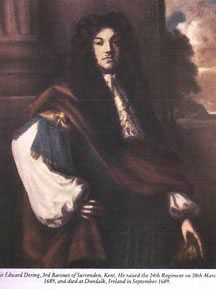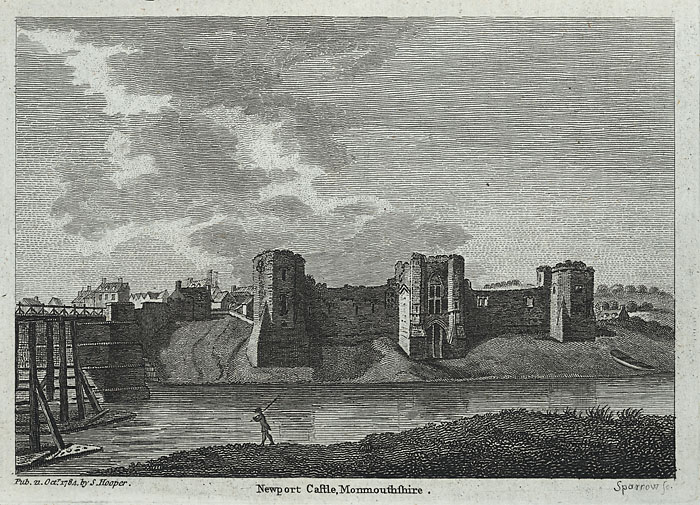|
Baker Street Drill Hall, Abergavenny
The Baker Street drill hall is a former military installation in Abergavenny in Wales. History The building was designed as the headquarters of the 4th Volunteer Battalion, The South Wales Borderers and was completed in 1896. This unit evolved to become the 3rd Battalion, The Monmouthshire Regiment in 1908. The battalion was mobilised at the drill hall in August 1914 before being deployed to the Western Front. The battalion converted to become the 637th Heavy Anti-Aircraft Regiment, Royal Artillery (3rd Battalion The Monmouthshire Regiment) in 1947 and evolved to become the 638th (Brecknockshire and Monmouthshire) Light Anti-Aircraft Regiment, Royal Artillery in 1955. In 1967, further reductions took place and, when the Monmouthshire line was taken up by 211 (South Wales) Battery, 104th Light Air Defence Regiment, that unit was based at Raglan Barracks in Newport Newport most commonly refers to: *Newport, Wales *Newport, Rhode Island, US Newport or New Port may also refe ... [...More Info...] [...Related Items...] OR: [Wikipedia] [Google] [Baidu] |
Abergavenny
Abergavenny (; cy, Y Fenni , archaically ''Abergafenni'' meaning "mouth of the River Gavenny") is a market town and Community (Wales), community in Monmouthshire, Wales. Abergavenny is promoted as a ''Gateway to Wales''; it is approximately from the England–Wales border, border with England and is located where the A40 road, A40 trunk road and the A465 road, A465 Heads of the Valleys road meet. Originally the site of a Castra, Roman fort, Gobannium, it became a Middle Ages, medieval Defensive wall, walled town within the Welsh Marches. The town contains the remains of a medieval stone castle built soon after the Norman invasion of Wales, Norman conquest of Wales. Abergavenny is situated at the confluence of the River Usk and a tributary stream, the Gavenny. It is almost entirely surrounded by mountains and hills: the Blorenge (), the Sugar Loaf Mountain, Wales, Sugar Loaf (), Ysgyryd Fawr (Great Skirrid), Ysgyryd Fach (Little Skirrid), Deri, Rholben and Mynydd Llanwenarth, ... [...More Info...] [...Related Items...] OR: [Wikipedia] [Google] [Baidu] |
War Office
The War Office was a department of the British Government responsible for the administration of the British Army between 1857 and 1964, when its functions were transferred to the new Ministry of Defence (United Kingdom), Ministry of Defence (MoD). This article contains text from this source, which is available under th Open Government Licence v3.0 © Crown copyright It was equivalent to the Admiralty (United Kingdom), Admiralty, responsible for the Royal Navy (RN), and (much later) the Air Ministry, which oversaw the Royal Air Force (RAF). The name 'War Office' is also given to the former home of the department, located at the junction of Horse Guards Avenue and Whitehall in central London. The landmark building was sold on 1 March 2016 by HM Government for more than British pound, £350 million, on a 250 year lease for conversion into a luxury hotel and residential apartments. Prior to 1855, 'War Office' signified the office of the Secretary at War. In the 17th an ... [...More Info...] [...Related Items...] OR: [Wikipedia] [Google] [Baidu] |
Wales
Wales ( cy, Cymru ) is a Countries of the United Kingdom, country that is part of the United Kingdom. It is bordered by England to the Wales–England border, east, the Irish Sea to the north and west, the Celtic Sea to the south west and the Bristol Channel to the south. It had a population in 2021 of 3,107,500 and has a total area of . Wales has over of coastline and is largely mountainous with its higher peaks in the north and central areas, including Snowdon (), its highest summit. The country lies within the Temperateness, north temperate zone and has a changeable, maritime climate. The capital and largest city is Cardiff. Welsh national identity emerged among the Celtic Britons after the Roman withdrawal from Britain in the 5th century, and Wales was formed as a Kingdom of Wales, kingdom under Gruffydd ap Llywelyn in 1055. Wales is regarded as one of the Celtic nations. The Conquest of Wales by Edward I, conquest of Wales by Edward I of England was completed by 1283, th ... [...More Info...] [...Related Items...] OR: [Wikipedia] [Google] [Baidu] |
South Wales Borderers
The South Wales Borderers was a line infantry regiment of the British Army in existence for 280 years. It came into existence in England in 1689, as Sir Edward Dering's Regiment of Foot, and afterwards had a variety of names and headquarters. In 1782, it became the 24th Regiment of Foot, and had its depot in Warwickshire. Based at Brecon from 1873, the regiment recruited from the border counties of Brecknockshire, Monmouthshire, and Herefordshire. It was not called the South Wales Borderers until the Childers Reforms of 1881. The regiment served in a great many conflicts, including the American War of Independence, various conflicts in India, the Zulu War, Second Boer War, and World War I and World War II. In 1969 the regiment was amalgamated with the Welch Regiment to form the Royal Regiment of Wales. History Early history The regiment was formed by Sir Edward Dering, 3rd Baronet as Sir Edward Dering's Regiment of Foot in 1689, becoming known, like other regiments, ... [...More Info...] [...Related Items...] OR: [Wikipedia] [Google] [Baidu] |
Monmouthshire Regiment
The Monmouthshire Regiment was a Territorial infantry regiment of the British Army. Originating in units of rifle volunteers formed in Monmouthshire in 1859, the regiment served in the Second Anglo-Boer War and both World War I and World War II before losing its separate identity in 1967. Origins Units of rifle volunteers were formed throughout Great Britain in 1859 and 1860 in response to a perceived threat of invasion by France following the Orsini affair. The raising of such units was to be authorised by lieutenants of counties in England, Wales and Scotland. The first corps in Monmouthshire was raised on 9 September 1859.Frederick, pp. 171–3. By 1880 the various small corps in the county had been consolidated into three battalion-sized units, the 1st, 2nd and 3rd Monmouthshire Rifle Volunteer Corps. In the following year the Childers Reforms of line infantry saw the three Monmouthshire corps becoming volunteer battalions of the regular South Wales Borderers. In 188 ... [...More Info...] [...Related Items...] OR: [Wikipedia] [Google] [Baidu] |
Western Front (World War I)
The Western Front was one of the main theatres of war during the First World War. Following the outbreak of war in August 1914, the German Army opened the Western Front by invading Luxembourg and Belgium, then gaining military control of important industrial regions in France. The German advance was halted with the Battle of the Marne. Following the Race to the Sea, both sides dug in along a meandering line of fortified trenches, stretching from the North Sea to the Swiss frontier with France, which changed little except during early 1917 and in 1918. Between 1915 and 1917 there were several offensives along this front. The attacks employed massive artillery bombardments and massed infantry advances. Entrenchments, machine gun emplacements, barbed wire and artillery repeatedly inflicted severe casualties during attacks and counter-attacks and no significant advances were made. Among the most costly of these offensives were the Battle of Verdun, in 1916, with a combined 700 ... [...More Info...] [...Related Items...] OR: [Wikipedia] [Google] [Baidu] |
104th Regiment Royal Artillery
104 Regiment Royal Artillery is part of the British Army Reserve and has sub-units throughout Wales and the West Midlands of England. It is equipped with the 105mm Light Gun. History The regiment was formed as 104 Light Air Defence Regiment Royal Artillery (Volunteers) in 1967. Its units were 210 (Staffordshire) Light Air Defence Battery at Wolverhampton and 211 (South Wales) Light Air Defence Battery at Newport. In 1969, 214 (Worcestershire) Light Air Defence Battery at Malvern joined the regiment. It was renamed 104 Air Defence Regiment Royal Artillery (Volunteers) in 1976. In 1986, 214 Battery was formed at Worcester and 217 (County of Gwent) Air Defence Battery was formed at Cwmbran: both joined the regiment. In 1992 217 Battery was merged into Headquarters Battery and in 1993 the regiment was renamed 104 Regiment Royal Artillery (Volunteers). Meanwhile, 210 Battery moved to 106th (Yeomanry) Regiment Royal Artillery. Under Army 2020, 266 (Gloucestershire Volunteer Artille ... [...More Info...] [...Related Items...] OR: [Wikipedia] [Google] [Baidu] |
Raglan Barracks, Newport
Raglan Barracks is a military installation at Barrack Hill in Allt-yr-yn in Newport, Wales. History The barracks were built as a cavalry barracks and completed in 1845. During the First World War they were known as the Cavalry Barracks and served as the 4th cavalry depot providing accommodation for the 2nd Dragoon Guards (Queen's Bays), the 3rd Dragoon Guards, the 4th Royal Irish Dragoon Guards, the Carabiniers (6th Dragoon Guards), the 7th Dragoon Guards and the 6th (Inniskilling) Dragoons. The barracks were renamed Raglan Barracks after FitzRoy Somerset, 1st Baron Raglan in 1963. Units The barracks are now home to: * Headquarters, 104th Regiment Royal Artillery, * Corps of Drums of 3rd Battalion, Royal Welsh. * Detachment, 4th Battalion the Parachute Regiment * E Squadron 21 SAS 1 (one, unit, unity) is a number representing a single or the only entity. 1 is also a numerical digit and represents a single unit of counting or measurement. For example, a line segment of ... [...More Info...] [...Related Items...] OR: [Wikipedia] [Google] [Baidu] |
Newport, Wales
Newport ( cy, Casnewydd; ) is a city and county borough in Wales, situated on the River Usk close to its confluence with the Severn Estuary, northeast of Cardiff. With a population of 145,700 at the 2011 census, Newport is the third-largest authority with city status in Wales, and seventh most populous overall. Newport became a unitary authority in 1996 and forms part of the Cardiff-Newport metropolitan area. Newport was the site of the last large-scale armed insurrection in Great Britain, the Newport Rising of 1839. Newport has been a port since medieval times when the first Newport Castle was built by the Normans. The town outgrew the earlier Roman town of Caerleon, immediately upstream and now part of the borough. Newport gained its first charter in 1314. It grew significantly in the 19th century when its port became the focus of coal exports from the eastern South Wales Valleys. Newport was the largest coal exporter in Wales until the rise of Cardiff in the mid ... [...More Info...] [...Related Items...] OR: [Wikipedia] [Google] [Baidu] |
Buildings And Structures In Monmouthshire
A building, or edifice, is an enclosed structure with a roof and walls standing more or less permanently in one place, such as a house or factory (although there's also portable buildings). Buildings come in a variety of sizes, shapes, and functions, and have been adapted throughout history for a wide number of factors, from building materials available, to weather conditions, land prices, ground conditions, specific uses, prestige, and aesthetic reasons. To better understand the term ''building'' compare the list of nonbuilding structures. Buildings serve several societal needs – primarily as shelter from weather, security, living space, privacy, to store belongings, and to comfortably live and work. A building as a shelter represents a physical division of the human habitat (a place of comfort and safety) and the ''outside'' (a place that at times may be harsh and harmful). Ever since the first cave paintings, buildings have also become objects or canvasses of much artist ... [...More Info...] [...Related Items...] OR: [Wikipedia] [Google] [Baidu] |





